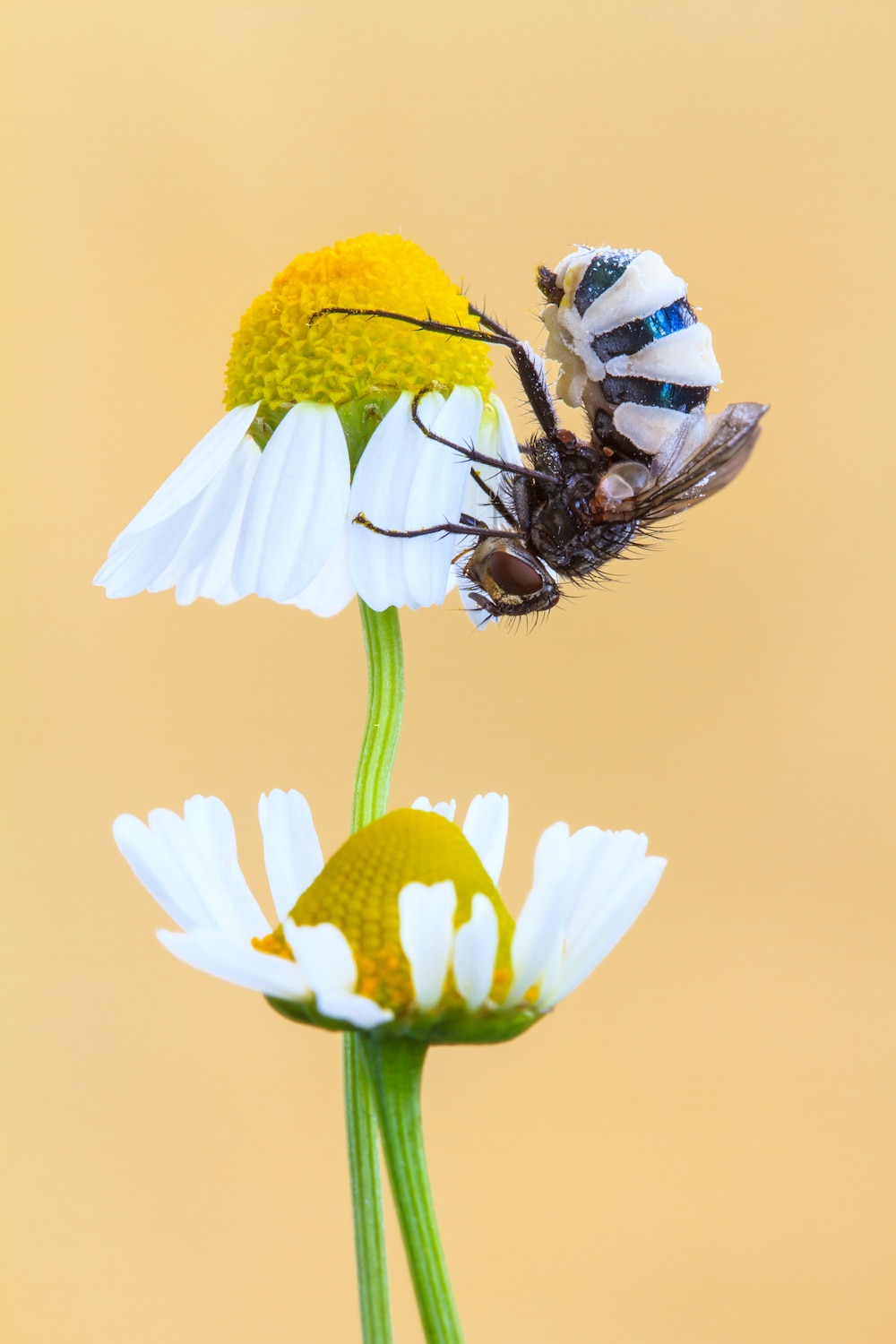Create a free profile to get unlimited access to exclusive videos, sweepstakes, and more!
Zombie fungus forces flies to get freaky with dead mates
Health class could have been much more frightening if we were flies.

If ever there was an argument for a sexual education program among housefly populations, here it is. According to a new study carried out by scientists at the University of Copenhagen, Denmark and the Swedish University of Agricultural Sciences, a parasitic fungal infection mimics sexual behavior in order to trick male flies into becoming infected. The findings were published on the preprint server bioRxiv, and are awaiting peer review.
Many parasitic pathogens manipulate the behavior of their hosts in order to maximize the probability of being passed on and continuing their life cycle. This usually involves modifying the behavior of an infected host such that they place themselves in a position beneficial to the fungus. Many cause their hosts to climb to a high place so that spores can spread over a larger area. This particular housefly fungus takes the process a step further, manipulating not just the host but also uninfected individuals who happen to be nearby.
Entomophthora muscae is the stuff fly nightmares are made of. When a spore makes contact with the body of a housefly, it germinates within a few hours, breaking through the body’s exterior. Once inside, the fungus circulates through the bloodstream, taking energy from the fly to multiply while consuming it from the inside. As it nears the end of the cycle, it does what many parasitic fungi do, causing the fly to seek out high ground and extend its wings as if readying for flight, then the fly dies. Shortly thereafter, the fungus breaks through the body and sporulates in hopes of catching the next host in its deadly cloud.
Sometimes that process is enough. If another fly happens to be caught by one of the release spores, the cycle continues. But Entomophthora muscae has an insurance policy to ensure it makes contact with a new host.
In the case of female flies, the fungus hijacks their sexual behavior to entice male flies toward them. Female houseflies emit pheromones to alert potential mates of their sexual availability and the fungus does the same thing. Scientists looked at two potential mechanisms, either that the fungus is able to turn up the volume on the female fly’s natural pheromone production, or that it’s able to mimic the scent. Maybe both. In any case, as sporulation proceeds, infected and deceased female flies increasingly release a scent drawing males toward them.
This sort of mimicry in non-animals isn’t totally unheard of. Many plants mimic sexual characteristics of insects, either through their shape or their smell, to fool pollinators into making contact. But this is the first time it has been seen in a parasitic fungus.
In lab experiments, males were placed into an arena with both infected female cadavers and control cadavers to measure the impact of sexual scents during sporulation. Males didn’t appear to be able to differentiate between the two options and there was no observed difference in the number of mating attempts. However, if the infected cadaver was in the later stages of sporulation, total attempts to mate increased, providing evidence that fungal activity was stimulating the mating response in males. The mechanics of mating itself, especially in the later stages of sporulation, might also release more spores than would otherwise be present in the environment.
Those males who attempted mating with infected cadavers were then incubated for 10 days in order to verify subsequent infection. In those individuals who attempted mating with females during late-stage sporulation, 73% became infected themselves, compared to only 15% who attempted to mate during earlier stages.
Moreover, in later tests researchers observed flies approaching fungal spores even in the absence of infected cadavers. Males would approach and taste the spores with their proboscis, a behavior which is not recommended if you’re trying not to be infected. Glue traps containing fungal spores captured more flies than a control trap, indicating the spores themselves include a chemical profile which acts as a strong attractant by mimicking pre-existing biological processes.
The exact processes at work between flies and Entomophthora muscae are still under investigation, but it seems as though the fungus has figured out a way to act as the insect equivalent of a siren song, luring unsuspecting flies to a terrible death.


























